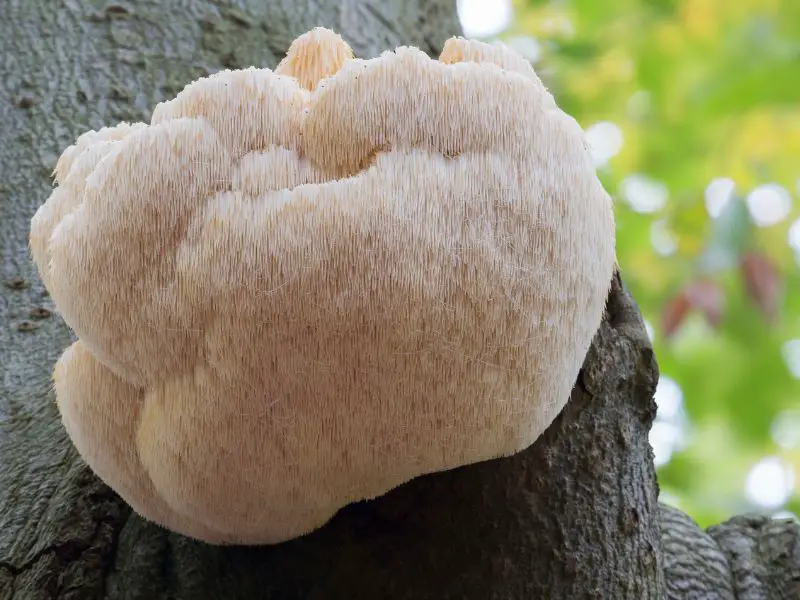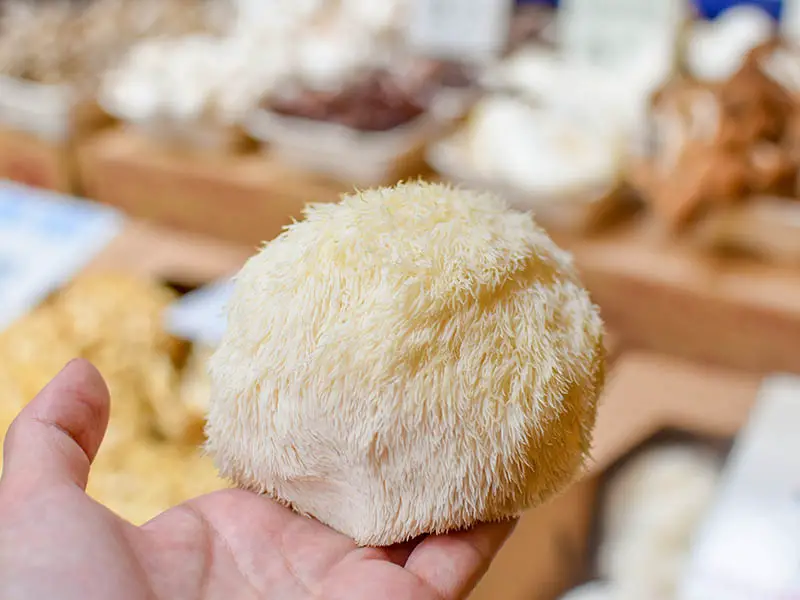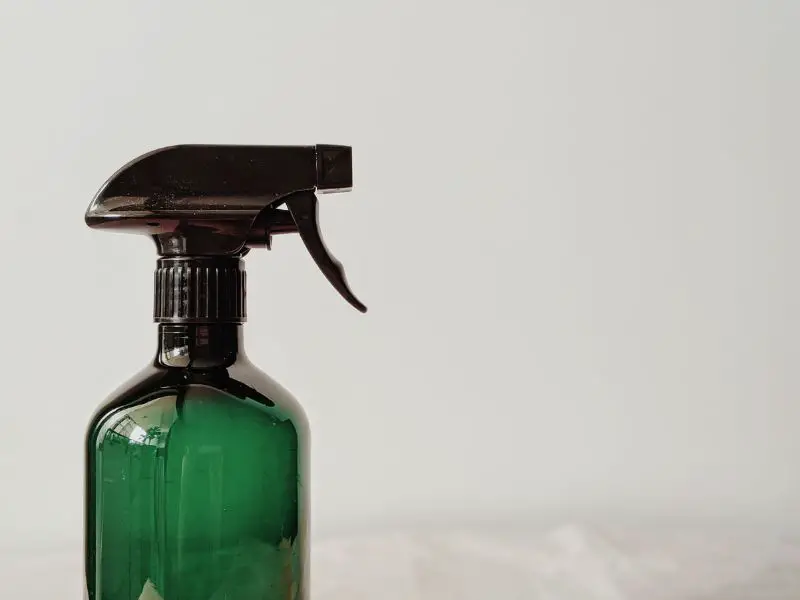I recently wrote an article on why and how to prevent oyster mushrooms from turning brown and wondered if all the same applied to lion’s mane mushrooms. So, I did some research. Here’s what I found.
Lion’s mane mushrooms turn brown due to factors such as over-maturation, dryness, direct light, and contamination. To prevent browning, harvest mushrooms early, maintain proper humidity levels, mist the mushrooms, protect them from direct light, and keep your growing area clean to avoid infections.

Let’s dive into the causes and 5 ways to prevent them from turning brown.
1. Dryness
Like all mushrooms, Lion’s Mane requires a certain level of moisture to thrive.
Dehydration can lead to a significant change in their appearance, including brown discoloration.
This discoloration is a visual indicator of the mushrooms’ struggle to maintain their cellular functions amidst inadequate hydration levels.
Direct Light
Lion’s mane mushrooms can turn brown from direct sunlight or too much UV radiation due to the degradation of melanin pigment in their fruiting bodies. Melanin is a natural pigment that gives mushrooms their characteristic color and also protects them from UV radiation.
According to “Mushroom Biology and Mushroom Products” by Shu-Ting Chang and Philip G. Miles, “UV irradiation can cause degradation of melanin, which can lead to browning of mushrooms”.
The authors further explain that mushrooms exposed to direct sunlight can also undergo a similar process, where “the pigments in the fruiting bodies are broken down by the light, leading to browning”.
Therefore, it is recommended to grow mushrooms in shaded areas or indoors to avoid direct sunlight or excessive UV radiation exposure, which can lead to browning and reduced quality of the harvested mushrooms.
2. Over Maturation
Lion’s mane mushrooms naturally change color as they age. The older the mushroom, the more likely it is to turn brown. In particular, the gills and edges of the cap will darken, giving the mushroom a brownish color.
While this is a natural process, it’s essential to harvest your mushrooms at the right time to prevent excessive browning. The reason why most lion’s mane mushrooms have a pale color is because they are harvested at a young age.
3. Direct Watering
Mushrooms, including Lion’s Mane, absorb water through their mycelium, an underground network of thread-like structures, which is quite different from the roots of plants. When water is applied directly onto the mushroom’s fruiting body, it can lead to several issues.
Firstly, the surface of the mushroom might become waterlogged. This excess moisture can disrupt the balance of the mushroom’s outer layer, leading to potential damage and discoloration, manifesting as a brown color.
Secondly, direct watering can wash away the mushroom’s protective layer of spores, exposing the mushroom and making it more susceptible to damage and discoloration.
4. Contamination
In some cases, browning mushrooms can indicate contamination. If you notice off-smells, other mold growth, or your mushrooms don’t look quite right, it’s best to discard them and start with a fresh batch.
Lion’s mane mushrooms can be susceptible to various fungal infections, which can cause browning or discoloration. Common fungal infections include Trichoderma mold, which can cause green patches on the mushrooms, and other molds that cause browning.
5 Ways To Prevent Lion’s Mane From Turning Brown

1. Manage Moisture Levels
Ensure that your growing environment maintains the proper moisture levels. Lion’s mane mushrooms thrive in humidity levels between 80-95%.
Be careful not to over-mist or under-mist, as both excessive and insufficient moisture can lead to browning. It’s also known that mushrooms turn yellow from not enough moisture.
To keep your mushroom environment at the perfect moisture, it is important to monitor the humidity and moisture levels in your growing area regularly. You can use a hygrometer to measure the humidity levels and a moisture meter to determine the moisture content of your substrate.
Adjust the humidity and moisture levels by adding or removing water. This will help ensure that your mushrooms grow healthily and avoid browning or other moisture-related problems.
2. Proper Harvest Time
As mentioned earlier, age can be a significant factor in mushrooms turning brown. To avoid this issue, harvest the mushrooms when they are still young and their caps are not fully opened.
Ideally, you should pick them when their edges are slightly curled under, indicating that they are at the perfect stage for harvesting.
3. Manage Light Exposure
Protect the mushrooms from direct sunlight by placing your containers in a location that receives indirect sunlight.
Alternatively, you can use a shade cloth to shield them from harsh sun rays. This will prevent excessive melanin production and keep your mushrooms from drying out and turning brown.
If your mushrooms are receiving too much direct sunlight, try moving your growing area to a spot with indirect or filtered light.
4. Mist Your Mushrooms

As we said earlier, directly watering your mushrooms can lead to many different issues.
It’s best to mist your mushrooms multiple times a day or water them without pouring water on the caps.
5. Maintain Cleanliness
Preventing contamination primarily involves stringent hygiene practices. Here are some key steps to avoid contamination:
- Sterilize the substrate: Before inoculating your substrate with Lion’s Mane spawn, make sure it is thoroughly sterilized to kill any potential contaminants. This process can often involve baking or pressure cooking the substrate.
- Clean your environment: The area where you grow your mushrooms should be kept clean and free from potential sources of contamination. This includes not only the immediate growing area but also the air and tools used in the growing process.
- Monitor for contamination: Keep a close eye on your mushroom cultures. If you see any unusual colors or textures, it could be a sign of contamination. Early detection can allow you to remove the affected areas and prevent the spread.
- Isolate cultures: It’s generally a good idea to keep different mushroom cultures separate from each other to prevent cross-contamination.
- Use quality spawn: Finally, ensure you are using high-quality, uncontaminated spawn for your mushrooms. Poor quality spawn can introduce contaminants right from the start.
